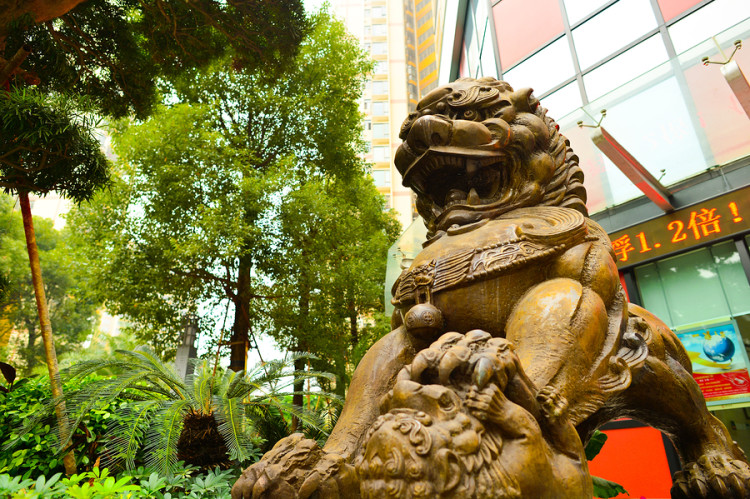How China Beats the U.S. at Clean-Air Progress: Tyler Cowen

To be sure, China faces serious pollution problems. The country relies heavily on manufacturing, the state is reluctant to close unprofitable businesses, dirty coal is an important energy source, automobile use is increasing and the central government doesn’t have enough power to enforce its will on the local authorities. Most of those problems, however, also plagued the U.S. in the middle of the 20th century.
To help predict when countries will start a successful fight against air pollution, economists have developed a metric known as the environmental Kuznets Curve. This curve shows that societies create more pollution as they move from poverty to wealth, but at some point they become so wealthy that they clean up the environment and then pollution declines. Well-off people don’t like breathing bad air and will sacrifice some economic growth for better surroundings.
OK, so where do China and the earlier U.S. stand in this scheme of things?
One famous paper, by economists Gene M. Grossman and Alan Krueger, found that (in current dollars) the turning point for environmental improvement comes in “almost every case” when countries reach the range of $17,000 to $18,000 in per capita annual income. Current Chinese per capita income can be plausibly estimated at over $14,000 per year. That means China may not be far from starting to clean up its air, and indeed air quality is already one of the major political issues in China.
The Chinese government already responds to pollution problems with factory closings and automobile restrictions more quickly than it used to, and in general there is better data and more transparency from policymakers. The U.S. Embassy in Beijing reports pollution improvements for particulate matter over the last year. Over the last two years, there have been suggestions, admittedly debatable ones, that China’s evolution into a service-sector economy means that the turning point already has been reached.
What about the U.S. and its history of fighting air pollution?
The reality is that progress came only in periodic bursts. In the mid-1940s, the U.S. turned away from burning bituminous coal and emissions of particulate matter peaked in the 1950s. Carbon monoxide emissions peaked around 1970 and then fell dramatically. Emissions of volatile organic compounds (a major culprit behind ozone pollution) peaked around 1970. Acid rainfall decreased after sulfur dioxide emissions peaked around 1970 and nitrogen dioxide peaked around 1980. For ambient ozone, there is clear evidence of a decline in the latter part of the 1970s.
Lead-free gasoline entered wide use in the mid-1970s, and then lead emissions fell dramatically. On the legislative side, the Clean Air Act was passed in 1970, but many of the resulting improvements were not immediate.
I would suggest the slightly generous estimate that, in terms of a weighted average, the U. S. first began to improve its air-pollution problem in the middle of the 1960s, when Americans earned an average of about $28,000 a year. In terms of the Kuznets curve, that means the U.S. was a laggard in limiting its air pollution problems compared to other nations and their average pace of starting improvements when incomes reached the neighborhood of $17,000. (In fairness to the U.S., as one of the first nations to fight air pollution, it faced a tougher, costlier, and more uncertain path.)
As for China, in the unlikely event that it waited until it was twice as rich as today to start turning around its air pollution problems, it would be roughly at the pace of the historical progress of the U.S. I therefore expect that China will move faster, and the Chinese facility with infrastructure gives additional reason to be optimistic. Fixing Chinese air pollution will require moving industrial production away from major cities and rapidly scaling up substitutes for coal, including wind, nuclear, solar and natural gas.
China may also be more likely than the U.S. to fix its carbon emissions problem, since such a fix can be packaged and sold to the citizenry along with concrete everyday improvements in breathability and urban visibility. The U.S. does not have the same options for convincing its citizens to bear the costs of a carbon tax or related measures.
The bad news is that China has yet to prove itself as a pollution fighter. But the more important good news is that it is probably well ahead of schedule, and a look at the broader history suggests we Americans are the slow ones.
This column does not necessarily reflect the opinion of the editorial board or Bloomberg LP and its owners.



No Comment